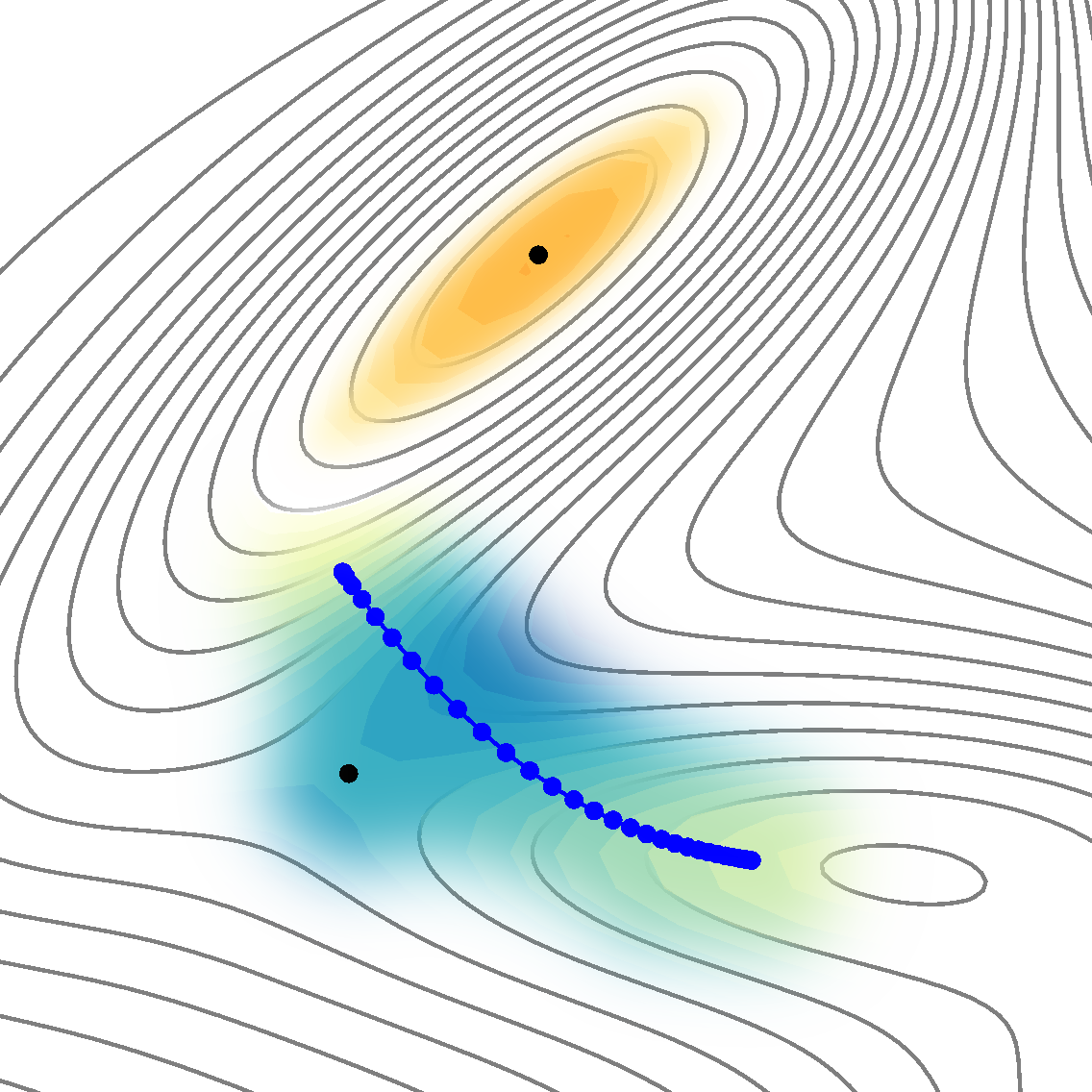New preprint
Ab initio instanton rate theory made efficient using Gaussian process regression
Ab initio instanton rate theory is a computational method for rigorously including tunnelling effects into calculations of chemical reaction rates based on a potential-energy surface computed on the fly from electronic-structure theory. This approach is necessary to extend conventional transition-state theory into the deep-tunnelling regime, but is also more computationally expensive as it requires many more ab initio calculations. We propose an approach which uses Gaussian process regression to fit the potential-energy surface locally around the dominant tunnelling pathway. The method can be converged to give the same result as from an on-the-fly ab initio instanton calculation but requires far fewer electronic-structure calculations. This makes it a practical approach for obtaining accurate rate constants based on high-level electronic-structure methods. We show fast convergence to reproduce benchmark H + CH4 results and evaluate new low-temperature rates of H + C2H6 in full dimensionality at a UCCSD(T)-F12b/cc-pVTZ-F12 level.
